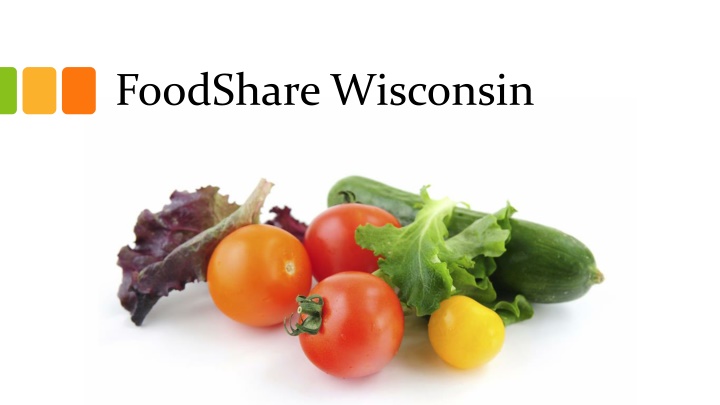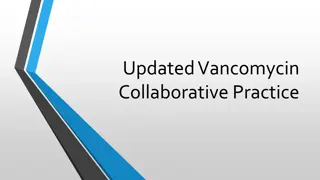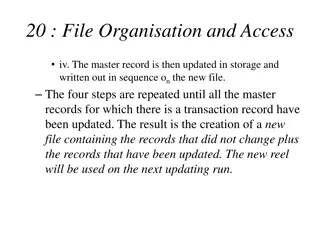
FoodShare in Wisconsin: SNAP Implementation and Benefits
Explore FoodShare in Wisconsin, the state's implementation of the Federal Supplemental Nutrition Assistance Program (SNAP). Learn about its goal, utilization, reasons for underutilization, overcoming stigma, ideas to overcome reservations, and its impact in politics. Discover how the Quest card works and where you can use it.
Download Presentation

Please find below an Image/Link to download the presentation.
The content on the website is provided AS IS for your information and personal use only. It may not be sold, licensed, or shared on other websites without obtaining consent from the author. If you encounter any issues during the download, it is possible that the publisher has removed the file from their server.
You are allowed to download the files provided on this website for personal or commercial use, subject to the condition that they are used lawfully. All files are the property of their respective owners.
The content on the website is provided AS IS for your information and personal use only. It may not be sold, licensed, or shared on other websites without obtaining consent from the author.
E N D
Presentation Transcript
Whats FoodShare? Wisconsin s implementation of Federal Supplemental Nutrition Assistance Program (SNAP) Goal: Increase the nutritional level of low income households by providing assistance to purchase food Lots of Names Food stamps, SNAP, EBT, Quest, Welfare
Considerations Available to people regardless of age One of the few benefits that factors a household s living expenses to increase benefits
Utilization Nationally Wisconsin Much higher participation than national average!
Reasons for Underutilization Not aware of the program Taking money from others (families, children) Potentially low benefit not worth enrollment and recertification requirements Stigma of accepting public benefits
Overcoming Stigma Emphasize nutrition program Even lowest amount ($16/month) = $192/year Money saved on food can be used for other things (medical expenses, household goods, etc.) If eligible, entitled to benefits (not taking away from others) Not state dollars brings federal dollars to local communities Discrete nature of Quest card (no paper food stamps)
Ideas to Overcome Reservations Call with client to conduct application and telephone interview Assist with providing verifications Emphasize discrete nature of Quest card Help locate a retailer (https://www.cbpp.org/snap-retailers- database#Wisconsin) Shop in a different town Shop only once or twice per year to stock up on bulk/non- perishable items
FoodShare in Politics Chilling Effect 6-month use it or lose it Photo ID Food Nanny bill Drug testing Public Charge Fraud, generally
Quest Card Swipe like a credit or debit card Enter PIN Deductions taken off card automatically for qualifying products
Where Can You Use the Quest Card? Grocery Stores (and many more!) Some Nutrition Sites Farmers Markets Look for EBT (Electronic Benefits Transfer) sign Call retailor ahead of time Accompany client the first time
What Can Be Purchased? Fruits and vegetables Meat, poultry, and fish Dairy products Breads and cereals Other foods such as snack foods and non-alcoholic beverages Seeds and plants that produce food for the household to eat
What Cannot Be Purchased? Beer, wine, liquor, cigarettes, or tobacco Vitamins, medicines, and supplements Live animals (except shellfish, fish removed from water, and animals slaughtered prior to pick-up from the store) Prepared Foods fit for immediate consumption Hot foods Any nonfood items such as: Pet foods Cleaning supplies, paper products, and other household supplies Hygiene items, cosmetics
Eligibility Non-Financial Criteria Financial Criteria
Non-Financial Criteria Residency and Citizenship Must be a resident of Wisconsin U.S. Citizenship is not required May be eligible even if a non-citizen Many different categories of non-citizenship See FSH 3.12.1
Non-Financial Criteria Work Requirements Able-Bodied Adults Without Dependents (ABAWD) Additional work requirements outside scope of presentation Non-ABAWD Standard work requirements
Work Requirements - Registration All applicants ages 16-59 must comply with work registration requirements UNLESS Meet an exemption OR Show good cause for non-compliance Applicants who do not meet the requirements are sanctioned from receiving FoodShare benefits
Work Requirements Registration (cont.) Must register at the time of application and every 12 months thereafter A person working 30 or more hours per week must not voluntarily and without good cause quit that job or reduce hours to less than 30 per week Must not turn down suitable employment without good cause If enrolled in UI or W-2 or applying for UI, must continue to meet their program work requirements
Work Requirements Exemptions If you are a member of these groups, the work registration requirements do not apply: People age 50 or over People receiving temporary or permanent disability benefits (government or private source) People who are mentally or physically unable to work (determined by Income Maintenance agency) People verified as unable to work by a statement from a health care professional or social worker Person who is the primary caregiver for a person who cannot care for him or herself (regardless if the person lives in or outside of the home)
Work Requirements Exemptions (cont.) Educational statues Receipt of unemployment compensation benefits Participation in AODA treatment (Alcohol and Other Drug Abuse) Many more! - see FSH 3.16.1.3
Work Requirements Good Cause to Avoid Sanctions Even if a person does not qualify for an exemption, he or she may have good cause for failing to meet the work requirements 17 total good cause circumstances - see FSH 3.16.1.7 Common examples: Applicant/member fired or resigned at employer s demand Personal health problems of applicant/member or others in the food unit requiring presence of the applicant/member Transportation unavailable
Non-Financial Criteria The Food Unit One or more persons who live in the same household and Purchase and prepare food together for home consumption, or Individuals who must be included in the same food unit because of relationship rules (See FSH 3.3.1.3). There are some exceptions for boarders, foster persons, and certain elderly and disabled individuals.
Non-Financial Criteria The Food Unit (cont.) Examples of a food unit include: A person living alone A group of unrelated persons living together who purchase and prepare meals together for home consumption An individual younger than 22 years of age living with his or her parents, regardless of whether he or she purchases and prepares food for home consumption separately from his or her parents
Food Unit Rule Purchase and Prepare People living together who: Share in the cost of purchasing food or Share in the preparation of food or Eat together Each person does not have to shop, provide money, prepare food, and eat together Any of those activities is sufficient to include a member in purchasing and preparing food with the food unit
Financial Criteria Income Assets
Financial Criteria - Income Two ways to be eligible for FoodShare: 1. Gross income* is under 200% Federal Poverty Level (FPL) OR 1. Net income is less than 100% FPL and assets below $3,500 * Gross income is earned income plus unearned income before any taxes or deductions are taken out
Financial Criteria Gross Income Earned Income Unearned Income Income one receives in return for doing something to earn the income Income one receives without doing something to earn it Example: Wages Examples: Social Security Retirement & Disability SSI Pension
Income NOT Counted In-Kind Support/Maintenance Free meals Free housing Free clothing Payment of a person s medical bills Irregular Income Less than $30 over 3 months Energy Assistance
Financial Criteria - Assets Asset limit $3,500 ONLY if Gross income is over 200% but Net income is under 100%
Deductions Earned Income Standard Medical Expense Dependent Care Child Support Excess Shelter
Earned Income Deduction Applies if the person has any earned income Subtract 20% of earned income from total gross income Example: Applicant has $1200 in gross income $500 earned $700 unearned 20% x $500 = $100 deduction
Standard Deduction Applies to everyone Amount depends on household size 2020 2021: Household Size Deduction 1-3 $167 4 $181 5 $212 6 or more $243
Medical Expense Deduction Any medical expenses in excess of $35 can be deducted See medical expense deduction worksheet
Dependent Care Deduction Actual expenses of dependent care can be deducted if dependent care is necessary to enable member to Keep or obtain employment Get training or education to prepare for employment Comply with employment and training requirements Example: Applicant resides with and cares for dependent child In order for the applicant to work, the child must attend daycare The cost of daycare is an allowable deduction
Child Support Deduction Allowable deduction for the party obligated to make a payment (actually made or reasonably anticipated to be made) Deduction is not for a person receiving child support or supposed to be receiving child support Must verify obligation to pay with court order
Excess Shelter Deduction If a household s shelter expenses are more than 50% of countable income, then the household receives an excess shelter deduction Add actual shelter expenses (rent, mortgage, property taxes, insurance, condo fees, etc.) to the Standard Utility Credit (see handout) Actual shelter expenses + Standard Utility Credit = Excess Shelter Deduction
Excess Shelter Deduction - Standard Utility Credits SUA Code Amount Type of Utility Allowance HSUA (Heating Standard Utility Allowance)* $462 Heating LUA (Limited Utility Allowance) $320 Non-heat electric with at least one other qualifying expense EUA (Electric Utility Allowance) $141 Electric Utility Allowance WUA (Water & Sewer Utility Allowance) $90 Water and sewer FUA (Cooking Fuel Allowance) $37 Cooking fuel PUA (Phone Utility Allowance) $29 Telephone TUA (Garbage & Trash Utility Allowance) $23 Garbage & trash *Households that have received WHEAP or other energy assistance payments in the past 12 months receive the HSUA.
Excess Shelter Deduction - Example A household has $800 in countable income Its shelter expenses (actual shelter costs plus the Standard Utility Credit) add up to $500 Because $500 is greater than 50% of the household s countable income ($400), the household will receive in excess shelter deduction of $100 $500 - $400 = $100 deduction
Minimum and Maximum Allotments (2020-2021) Minimum: $16 Maximum: Food Group Size Gross Income Limit (200% FPL) Net Income Limit (100% FPL) Maximum Allotment 1 $2,128 $1,064 $204 2 $2,874 $1,437 $374 3 $3,620 $1,810 $535 4 $4,368 $2,184 $680
Minimum and Maximum Allotments - Rule If the food unit s net income (after all deductions) is less than the maximum allotment the household will receive the difference between the income and maximum allotment If the food unit s net income (after all deductions) is greater than the maximum allotment the household will receive the minimum benefit
Minimum and Maximum Allotments - Example Greg is in a household of 1. His net income, after all deductions, is $150. $150 is less than the $204 maximum allotment, so Greg receives $54 per month in FoodShare benefits ($204 - $150 = $54). Sarah is in a household of 3. Her net income, after all deductions, is $550. $550 is greater than the $535 maximum allotment, so Sarah s household receives $16 per month in FoodShare benefits
How to Apply Submit an application in one of the following ways: Submit a signed Request for Assistance (RFA) Submit a FoodShare request with at least the minimum information required (name, address, and signature) using the FoodShare Registration or Application forms Complete an ACCESS application with an electronic signature Complete a request over the phone using a telephonic signature Complete a telephone interview Provide verifications
Recertifications Food units certified for 12 months and subject to reduced change reporting requirements are required to submit a six- month report form (SMRF) in the sixth month of the certification period. Elderly Blind and Disabled food units without earned income are exempt from the six-month reporting requirement.
Changes to Report at Recertification A change of $100 or more in unearned income Changes in earned income, including: Rate of pay Number of hours worked Loss of job Change from full to part-time New employment (but only if the first paycheck has actually been received by the time the SMRF is completed) Household composition (persons that have moved in or out, including newborns) New address and resulting changes in shelter expenses Change in legal obligation to pay child support
Changes Outside of Recertification As long as a food unit's total received income is less than 130% of the FPL, a food unit need not report changes in income, assets, address changes, household composition, etc. This is known as "Reduced Reporting" requirements. However, if any change is reported or becomes known to the agency, it must be acted upon. Changes can be reported timely or untimely. IM workers must act promptly on all reported changes. If verification is requested, a minimum of 10 days must be allowed for the member to provide the verification.
Summary Provide education and outreach Help reduce stigma Screen everyone for eligibility Calculate estimated benefit amounts Make sure all deductions are applied Assist with applications and recertifications Help keep Wisconsin healthy!
Resources DHS FoodShare Wisconsin https://www.dhs.wisconsin.gov/foodshare/index.htm FoodShare Wisconsin Handbook (FSH) http://www.emhandbooks.wisconsin.gov/fsh/fsh.htm ACCESS https://access.wisconsin.gov/ USDA Supplemental Nutrition Assistance Program (SNAP) https://www.fns.usda.gov/snap/supplemental-nutrition- assistance-program















